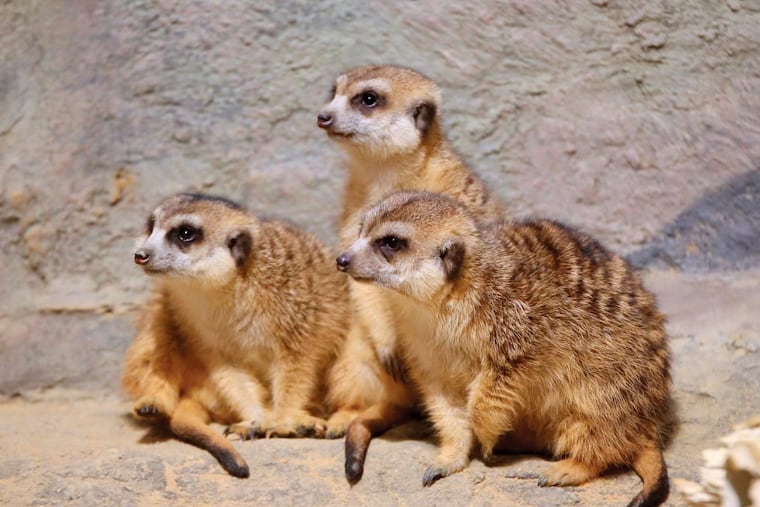All five of the Philadelphia Zoo’s meerkats have died from a mystery toxin
Nkosi, Lula, Nya, Kgala, and Ari, the meerkats at the Philadelphia Zoo, all died this month. The killer: a mystery toxin.

All five meerkats at the Philadelphia Zoo died this month after an apparently accidental poisoning that is under investigation by zoo officials and animal welfare groups.
Rachel Metz, the zoo’s vice president of animal well-being, said necropsy results were pending. But zookeepers suspect the poisoning was linked to the dye used to differentiate the near-identical meerkats. Zoo management has launched a probe alongside the Association of Zoos and Aquariums and the U.S. Department of Agriculture.
“Something different happened and we don’t know what that is,” Metz said. “We’ve started our initial fact-finding and are talking about everything that happened, step by step.”
Gregarious and weasel-like, meerkats are known for their playfulness and communal living style. They burrow for shelter in mobs of dozens. They communicate with purring sounds. They love crickets, beetles, and hard-boiled eggs.
The five meerkats — named Nkosi, Lula, Nya, Kgala, and Ari — had called the zoo home since February 2013, delighting guests as they skittered throughout a maze of caged trails that ran throughout the zoo. In videos, they palled around like close friends.
So close, in fact, it’s hard to tell them apart.
Animal activity logs obtained by The Inquirer show that the mob of meerkats were playfully foraging for worms inside Wiffle balls under zookeeper supervision on May 31. The next morning, about half an hour after having their dye re-marked for identification purposes, Nkosi was found dead.
Minutes later, the others started showing signs of acute illness, regurgitating food and vomiting black matter.
Veterinary staff intervened immediately to anesthetize the other four and pump their stomachs. Lula, Nya, and Kgala died within 36 hours. The last surviving meerkat, a male named Ari, remained under medical supervision for over a week. He died Monday night, Metz confirmed.
Metz said the zoo has been using an animal-marking dye known as Nyanzol-D for more than three decades without incident.
That dye appears to have been linked to other small-mammal deaths in recent years. Seven infant monkeys died at a University of California primate research laboratory in 2018 after their mothers were marked with a dye and orally transferred it to their offspring, according to the Guardian. The dye was later reported to be Nyanzol-D.
A Philadelphia zookeeper familiar with the situation said meerkats were typically separated during the dye-marking process to ensure they did not lick the dye off each other’s fur coats before it had dried. The zookeeper asked not to be named in order to speak freely.
Activity logs obtained by The Inquirer do not reflect that the animals were separated during the June 1 marking process.
Metz said separating the meerkats wasn’t necessary: “Historically we have not had to do that.”
The unnamed zookeeper contended that high staff turnover and rushed training for new zookeepers contributed to the deaths. Metz acknowledged the turnover. She said all training and animal-care protocols are under review.
“We are absolutely reexamining training policies and looking at standards and if there need to be adjustments,” she said.
Metz said management had made therapists available to zookeeper staff, who had been devastated by the deaths — the first accidental fatalities at the zoo in recent memory.
“Animals die of old age or cancer or disease, but the hardest is when you don’t know,” Metz said. “We spend more time with the animals here at the zoo than we do with our families or pets at home.”